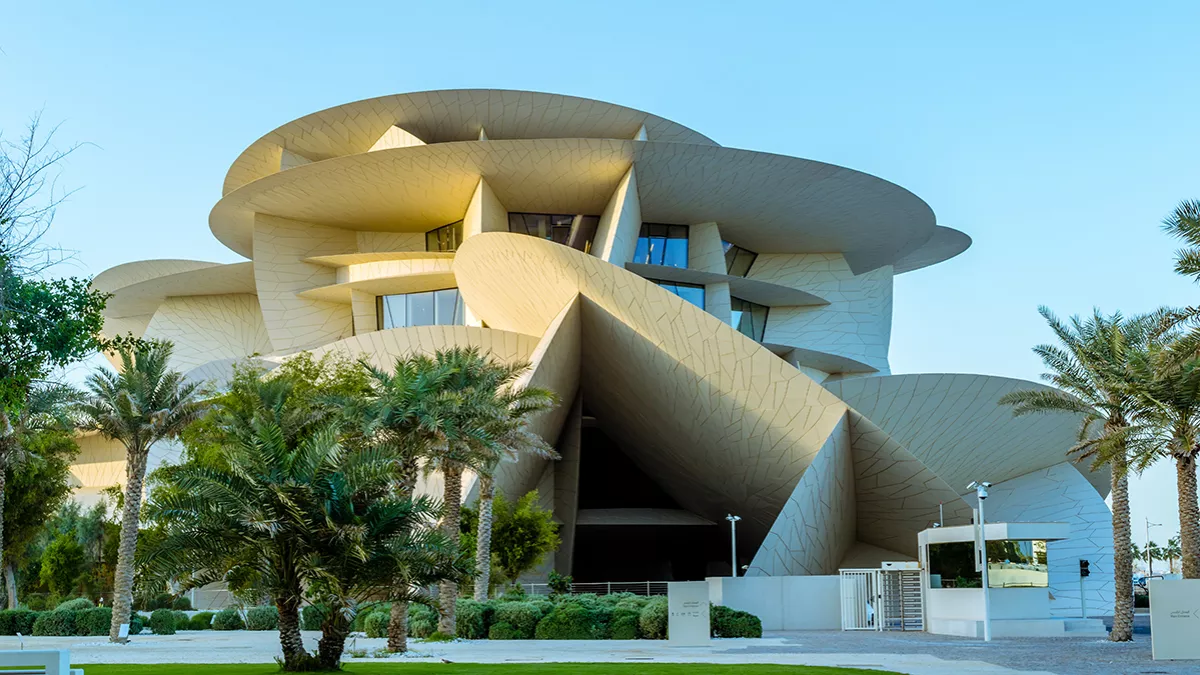On the Move Exhibition explores the lives of nomadic and semi-nomadic pastoralists
27 Oct 2022
Event
Special exhibition on view at the National Museum of Qatar (NMoQ), One the Move, was opened by Her Excellency Sheikha Al-Mayassa bint Hamad bin Khalifa Al Thani. The opening was attended by several dignitaries and will be on until 14 January 2023.
The exhibition focuses on three distinct regions and explores the lives of nomadic and semi-nomadic pastoralists living in these areas. The exhibition has a diverse selection of over 400 objects including paintings, historical images, oral historical, archival footage, and contemporary photography, covering the Central Sahara, Qatar and Mongolia regions. It explores how these groups developed and maintained rich, meaningful social lives, while producing complex and beautiful cultural forms in challenging environments, One the Move adds more value to Qatar Creates as it takes part in Qatar's storytelling.
Artefacts on display are drawn from the collections of NMOQ, Lusail Museum, Qatar National Library and Qatar Museums, along with loan items from international museums including the National Museum of Mongolia in Ulaanbaatar., Musée du Quai Branly in Paris, and Weltmuseum Wein in Vienna, among other institutions.
On the Move forms part of the Qatar-MENASA Year of Culture 2022, an international cultural exchange designed to deepen understanding between nations and their people. As such, the exhibition reflects the creative power and heritage of the Middle East, North Africa, South Asia (MENASA).
Event Details:
Location: National Museum of Qatar Museum
Date: 27 October 2022 - 14 January 2023
Time: 09:00 am - 07:00 pm
Ticket Purchase: Online
Price:
Adult - 100QR
One Pass Holder - It's free!
Child (Age 16 and under) - It's free!
Phone: 4452 5555
On the Move begins with an introduction of the complex histories and cultures of nomadic and semi-nomadic pastoralists from three different regions in the world: Qatar, Central Sahara and Mongolia Themes explored in the exhibition include: (mis) perceptions and (mis) representations; living spaces and dwellings; Pastoralists’ relationships with animals and with the environment; the groups rich social, cultural and spiritual lives; historical ruptures; and the influence of nomadic living in arts and culture today.
Art & Literature - A gallery on the (mis)perceptions and (mis)representations explores how mass media, art and literature, and academia have played a role in perpetuating stereotypes about nomadic communities.
Living spaces - The next gallery highlights the pastoralists’ living spaces and dwellings. The gallery features décor from these living spaces, and explores the functions of interior spaces, such as hosting guests.
Animals - The pastoralists’ relationships to their animals are also examined. Sheep and goats are most closely associated with pastoralists, providing a main source of nutrition as well as leather and wool. Camels are considered precious and are connected to social prestige as well as transportation. Horses are both vital to mobility and herding and represent community legacy and heritage. Falcons and eagles are used for hunting and represent high social standing. For some groups, dogs and donkeys are highly respected.
Group relationships and environment - The exhibition continues with a focus on the groups’ relationships to their environments. It highlights how their navigation is based on close observation of landscape features, patterns of plant growth, the movement of birds and animals, wind and weather patterns, and explores how the scarcity of resources influences how communities rely on nature to create remedies, clothing and much more.
Cultural and social lives - The pastoralists’ rich cultural, social and spiritual lives are explored in the next section of the exhibition. All three regions have profound oral traditions, which this section explores with the narration of three stories. The gallery highlights textiles, celebratory gatherings and different traditions for hospitality.
Political, economic and environmental - This section focuses on political, economic and environmental changes that have affected nomadic life.
Contemporary changes - The exhibition concludes with pastoralists’ development over time, highlighting contemporary changes to lifestyle and transportation. The final gallery examines influences in arts and culture today, from music to fashion and architecture.
The exhibition is curated by Professor Lila Abu-Lughod, Department of Anthropology, Columbia University; Tania Al Majid, Associate Curator of Social History and Ethnography, National Museum of Qatar; Faisal Al Naimi, Director of Archaeology, Qatar Museums; Dr. Haya Al Thani, Director of Curatorial Affairs, National Museum of Qatar; Dr. Anja Fischer, Department of Social and Cultural Anthropology, University of Vienna; and Dr. Elizabeth Turk, Department of Social Anthropology, University of Cambridge.
A collection of gifts inspired by the exhibition are available for purchase at the NMoQ gift shop.
